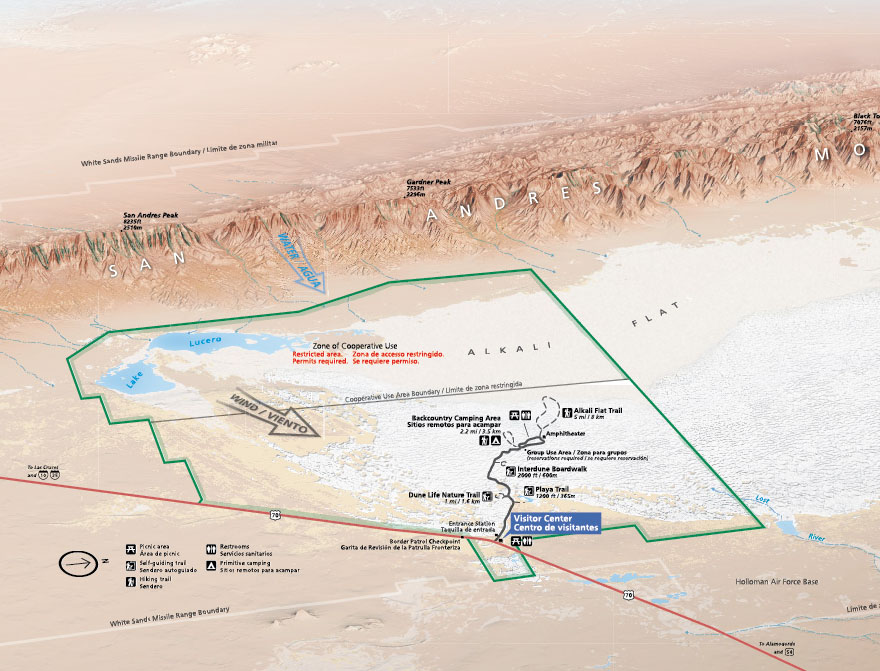White Sands NP--Boardwalk
White Sands NP--Boardwalk
Alamogordo, New Mexico 88310
Official WebsiteWhite Sands National Park Official Website
White Sands National Park map
About this Location
Length 0.4 miles, round-trip Average Completion Time: 20 minutes Difficulty: Easy Distance from fee station: 4.5 miles
The Interdune Boardwalk is an elevated boardwalk that leads you through the fragile interdune area to a scenic view of the dunefield and the Sacramento mountains. Enjoy 10 outdoor exhibits along the boardwalk. Learn about the amazing science happening here; tenacious wildlife that ekes out a living in this harsh environment; and the perfect weather and geologic conditions that created and sustain the world’s largest gypsum dunefield. This short walk may convince you that White Sands is the world’s greatest sandbox and much more.
The boardwalk is fully accessible for wheelchairs, strollers, and other wheeled devices.
A shade structure with seating is located midway along the boardwalk.
This area is reserved for nature study. Please stay on the boardwalk. For sand play and other recreational activities, drive three miles farther down the road into the heart of the dunes.
About White Sands National Park
See all hotspots at White Sands National Park
Did you know that this vast expanse of land, known as the Tularosa Basin, has attracted people for over 10,000 years? From atlatls to missiles, the glistening gypsum dunefield of White Sands has witnessed the steady advancement of human history, technology, and engineering. For thousands of years, people have called this place home.
Like a mirage, dazzling white sand dunes shimmer in the tucked-away Tularosa Basin in southern New Mexico. They shift and settle over the Chihuahuan Desert, covering 275 square miles—the largest gypsum dunefield in the world. White Sands National Park preserves more than half of this oasis, its shallow water supply, and the plants and animals living here.
There are over 220 recorded species of birds within White Sands National Park. High temperatures during the day, especially in the summer months, make it unlikely that you will come across these creatures in the heart of the dunefield. However, many of these species are commonly seen in the desert scrub around the visitor center and entrance station.
Content from White Sands National Park Official Website
